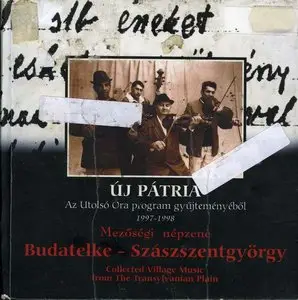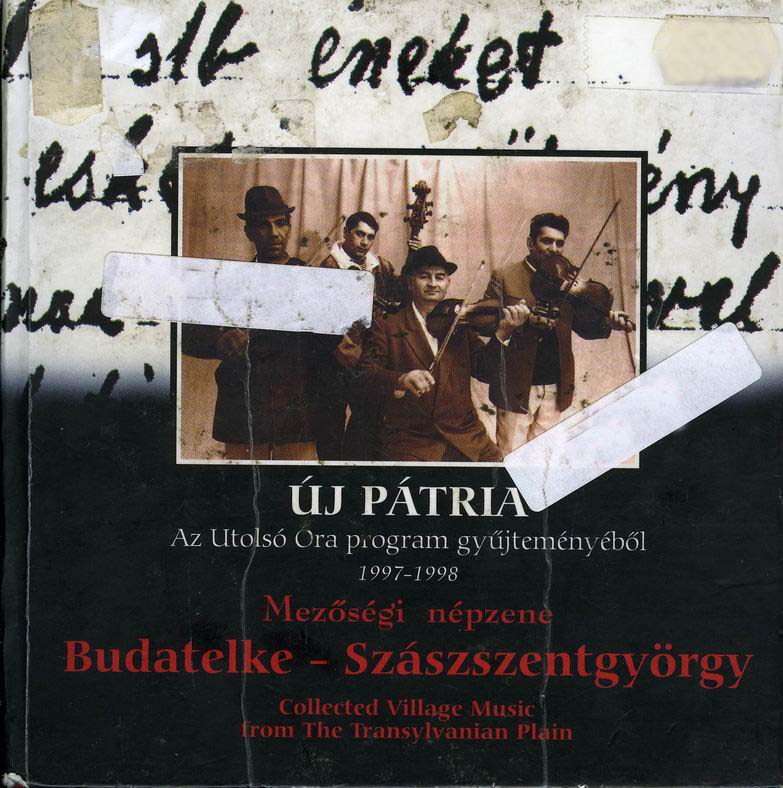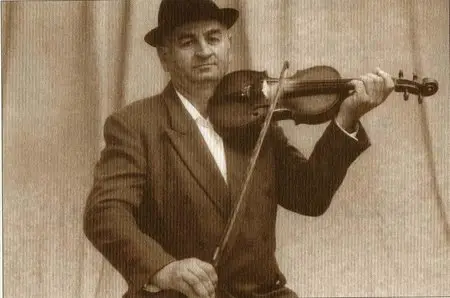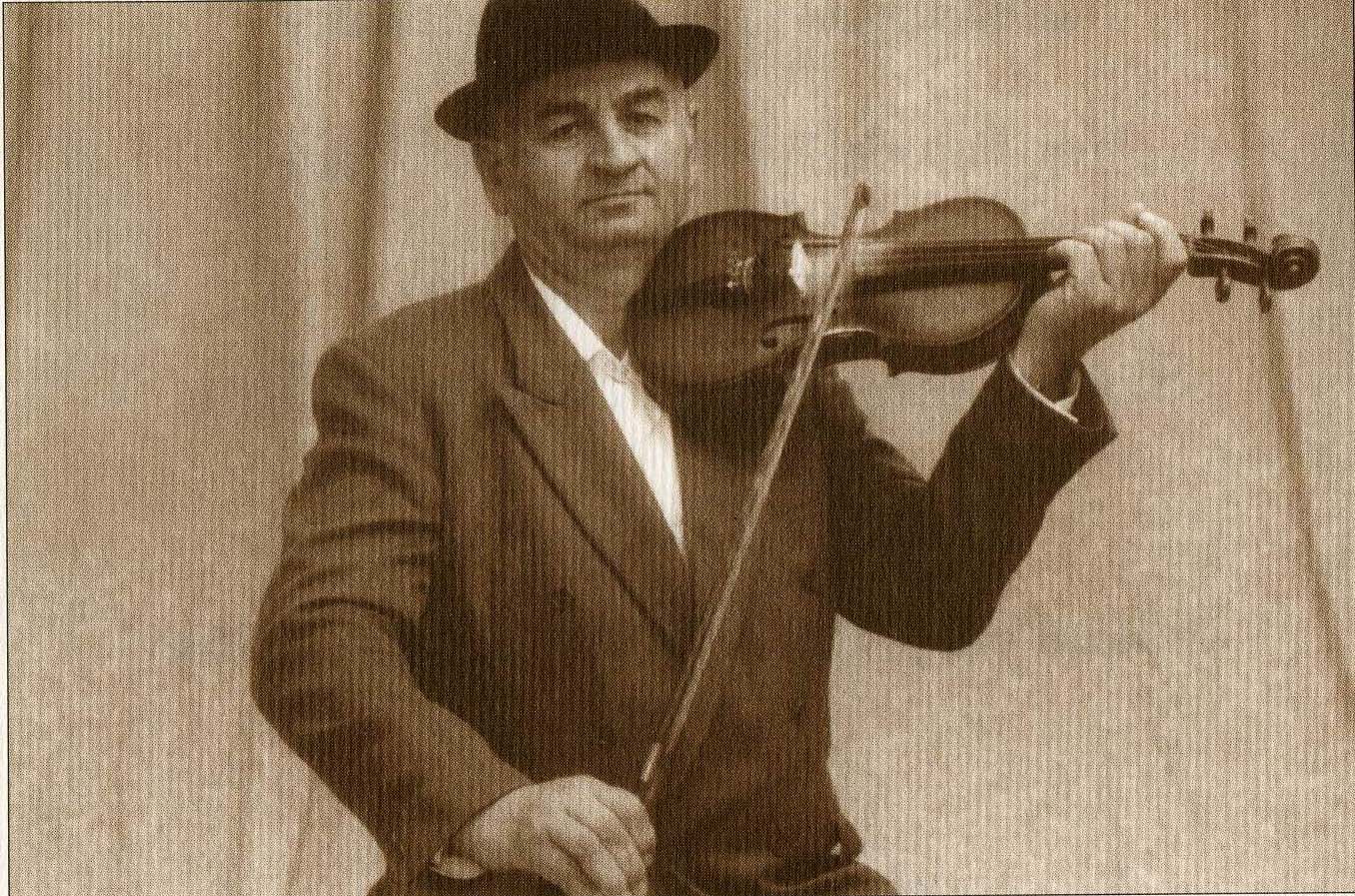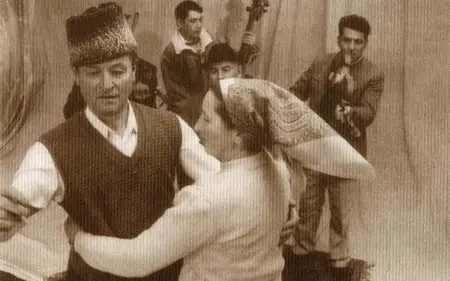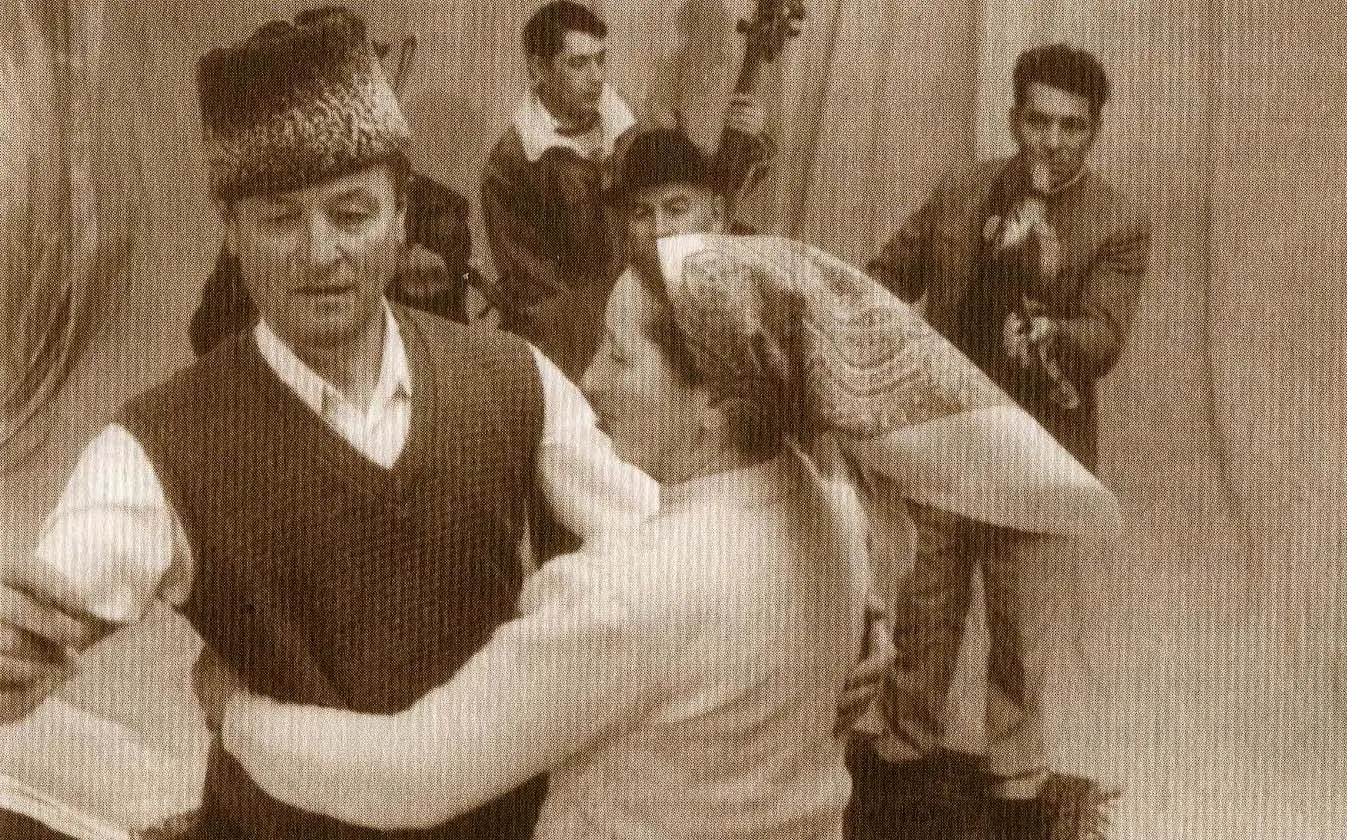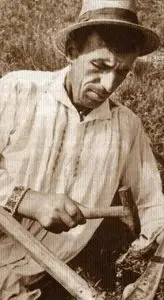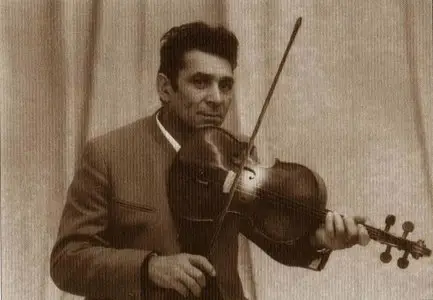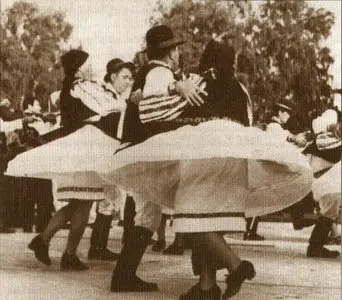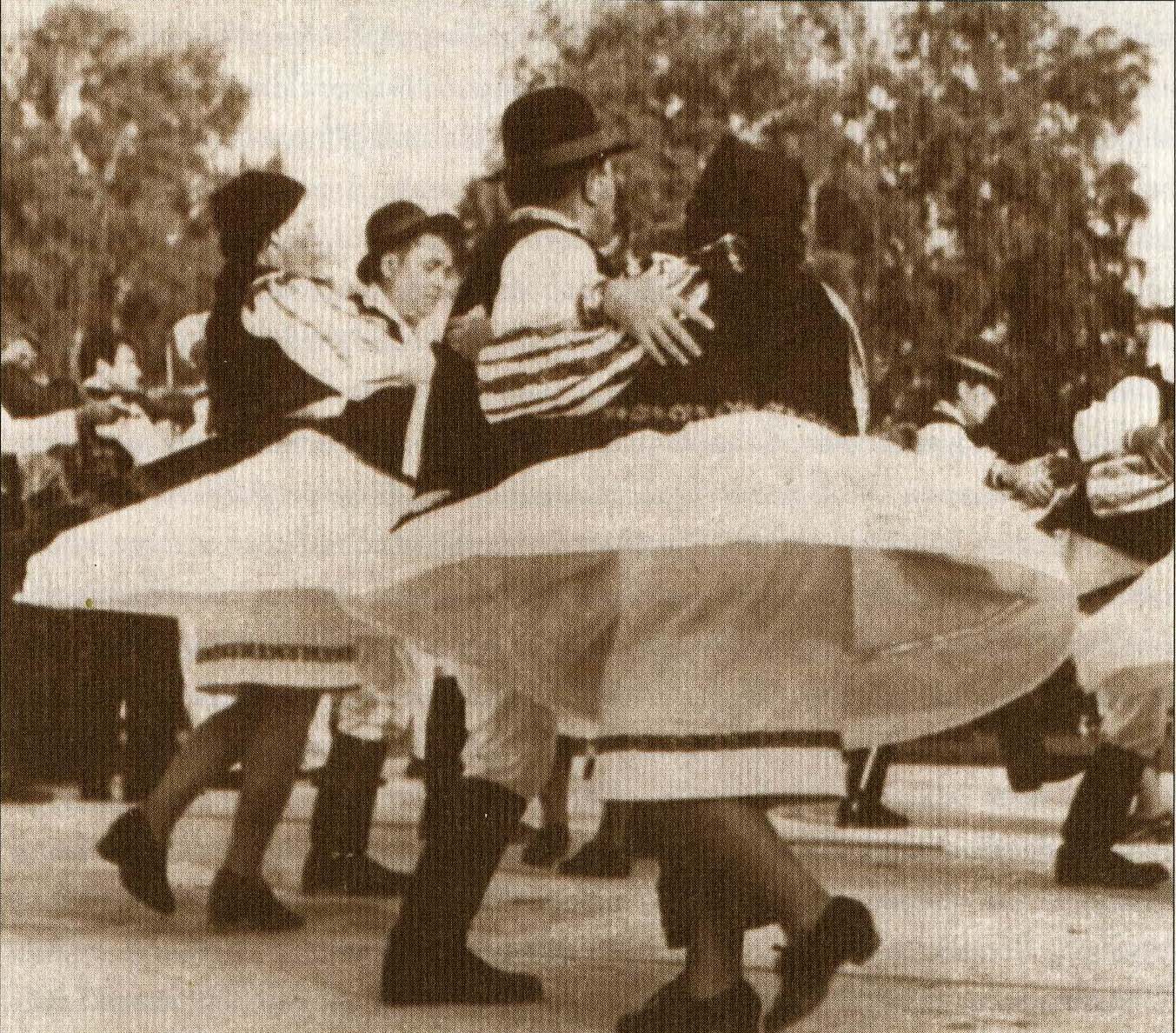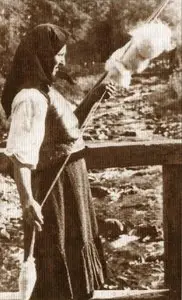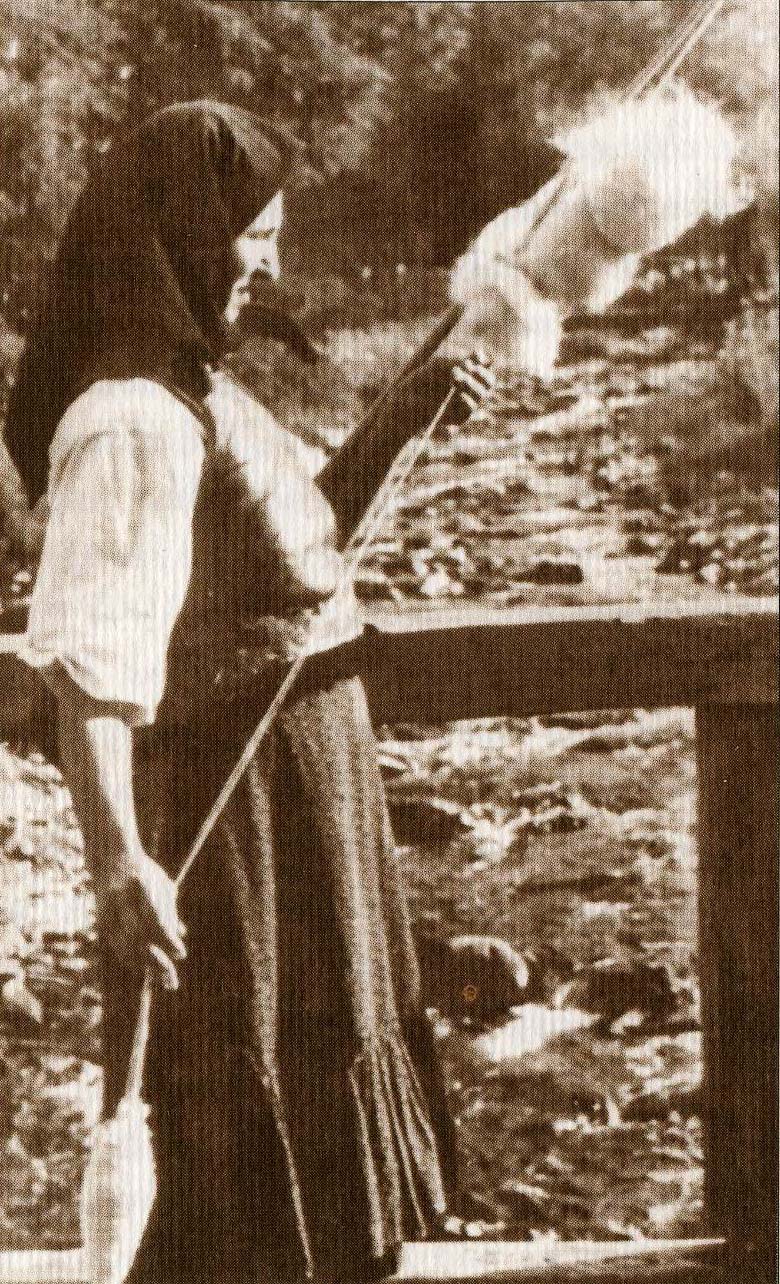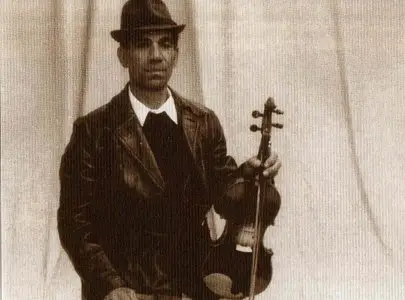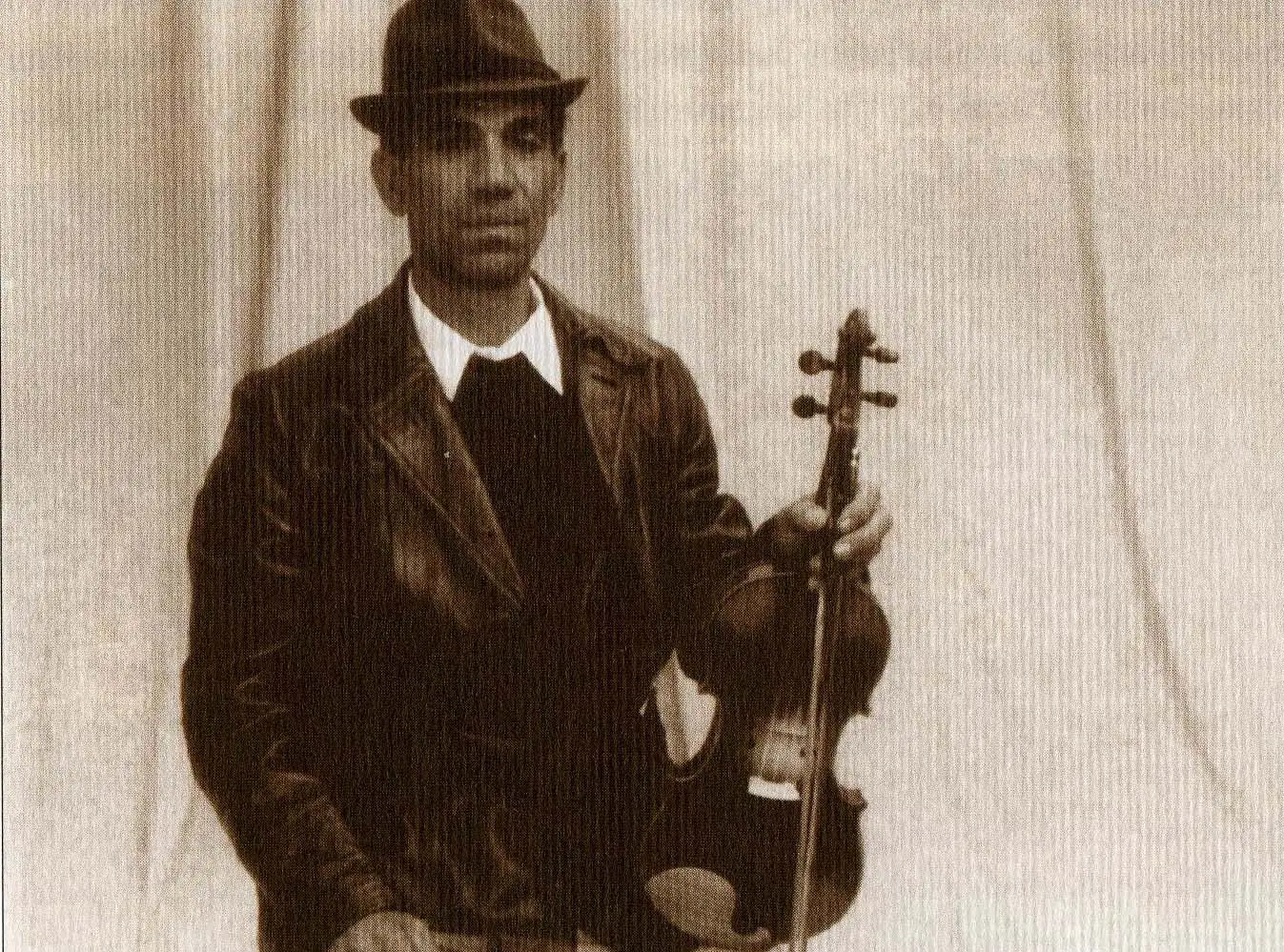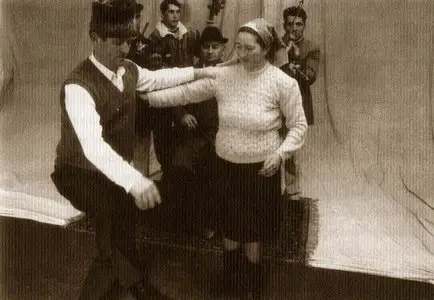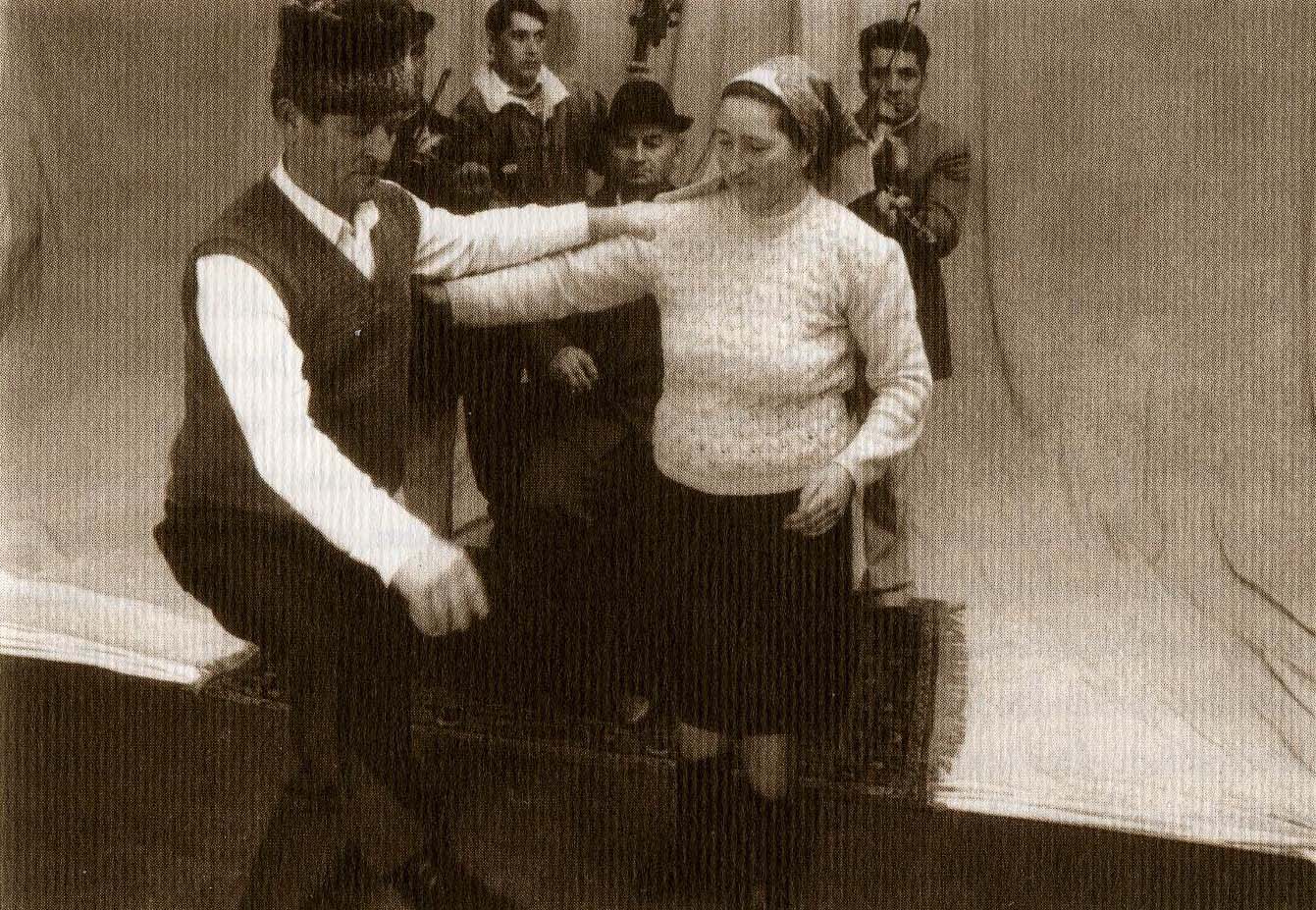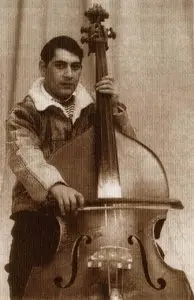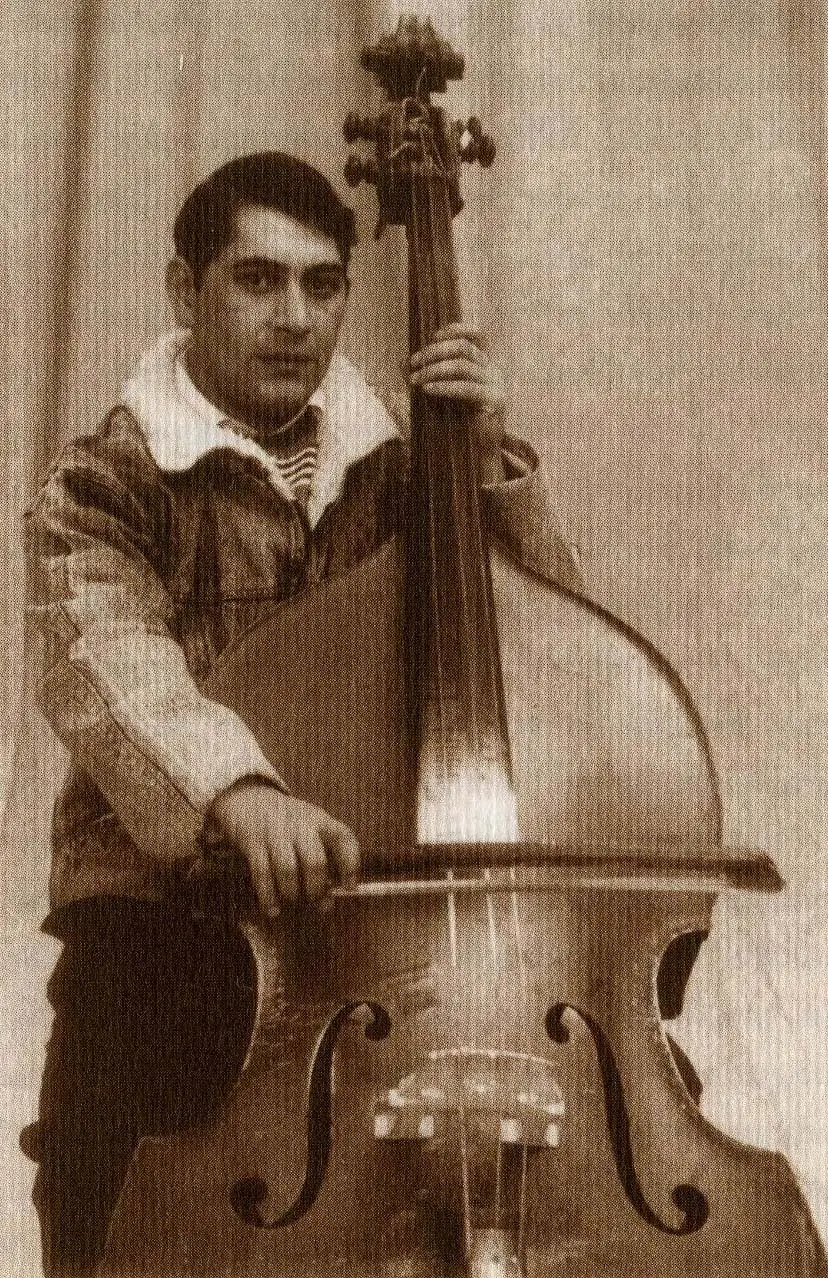Budatelke (Budeşti) – Szászszentgyörgy (Sângeorzu Nou). Village music from the Transylvanian Plain (Mezőség)
“Final Hour” Program: Traditional Village Music from Transylvania. “Új Pátria” series 2
Budapest, Fonó | 1998 | FA-101-2 | APE / MP3 320kbps | 355 / 160 MB | booklet JPG
The Final Hour Program and the “Új Pátria” Series
Since the governmental changes in Romania in 1990, the ease of crossing of the borders, increased possibility of working abroad, influx of consumerism and the cultural and sub-cultural effects caused by new of availability music cassettes have all contributed to more rapid changes in the folk traditions in Transylvania, even in the remotest villages. That is why the Fonó Budai Zeneház set to work to provide the financial background and facilities necessary to do this comprehensive collection of Transylvanian village music.
The Final Hour project is supported by the Institute of Musiscology at the Hungarian Academy of Sciences. Starting in September 1997, there have been regular recording sessions with bands from Transylvanian villages who still play the local traditional music. Each band is at our disposal for five days during which time it is possible to make archival recordings of not only each band’s repertoire of melodies which serves the entertainment needs of more than one ethnic group, but also to document information regarding customs surrounding the traditional music and dance life. Singers and one or two couples of good dancers arrive to Budapest for these recording sessions with each band, helping to maintain the vocal and dance function of the instrumental music. Part of the program is devoted to documentation of the existing Transylvanian traditional flute music.
The CD archive resulting from work of the Final Hour program offers a vast amount of material on the musical traditions of Hungarians, Romanians, Gypsies, Saxons and Jews in Transylvania for research studies as well as a wealth of authentic material and background information for those involved in popular folk music movements. The complete collection will be available for scientific research in the archive of the Institute of Musicology of the Hungarian Academy of Sciences.
The Fonó Records has started this series of CDs under the title “New Pátria,” presenting selections of the most representative material from the collection. This series is the spiritual descendant of the “Pátria” series from the end of the 1930’s by Béla Bartók, Zoltán Kodály and László Lajtha in cooperation with the Hungarian Radio and the Museum of Ethnography.
Budatelke (Budeşti) – Szászszentgyörgy (Sângeorzu Nou): Northeastern corner of the Transylvanian Plain (Mezőség):
Szászszentgyörgy (in Romanian earlier called Sângeorgiu săsesc, now Sângeorzu Nou, in German Sankt-Görgen or Sankt Georgen) appears in the records since 1317. For centuries it belonged to Beszterce-Naszód county which does not cover the same territory as the present day county. It is in the Besenyő district which in the 19th century was still ethnically Saxon. The first groups of the ethnic group which later became known as “Saxon” were brought in from the middle Rhine area, Luxemburg and the Mosel area by the Hungarian king Géza in the middle of the 12th century to the sparsely populated areas of the southern Transylvanian landowners. After the Mongol invasions King Béla IV invited Saxons to beef up the depleted population. Under Ceauşescu’s Communist regime, most of the Transylvanian Germans emigrated to Germany. Their music is preserved within the repertoire of village Gypsy musicians who had played for them, one of which is Ferdinánd Boldi of Szászszentgyörgy. Budatelke (in Romanian earlier Budatelec, later Budeşti) lies in the old Kolozs county, in the predominantly Romanian Mezőörményes district (the name of which refers to yet another ethnic group, örmény = Armenian).
A large number of Gypsies live in the area and in earlier times smaller Jewish communities existed. Exactly this type of ethnically mixed area is always inviting for researchers: where dance and music is always in bllom as the various ethnic groups continuously fertilize one another’s culture.
With the disintegration of the traditional folk life, the dance traditions are also gradually sliding into the background throughout Transylvania. First the men’s dances are left out of the dance repertoire, the musicians, on the other hand, still preserve them for awhile as a part of their melodic repertoire. In this area a relatively large amount of this material has remained, in the dance as well, perhaps because in earlier times a particularly rich repertoire of men’s dances existed here. The two old style “legényes”, called “ritka” and “sűrű magyar” are both danced in the valley west of Budatelke by both the Hungarians and Romanians (the Romanians call it ungureşte rar şi des). The “verbunk” (bărbunc) and “târnăveana” are all danced by both ethnic groups. The verbunk is considered to be a new style of dance. The târnăveana, as its name suggests, is a relative of the Romanian “forgatós” (învărtita) from the region along the Küküllő River. According to earlier tradition, the men’s dances were danced one directly following the other, as on the sixth track of this recording.
The “lassú csárdás” (a Hungarian slow couple dance) is part of the common Hungarian, Romanian, Gypsy dance repertoire, but only the Hungarians in eastern Mezőség call it by this name. In western Mezőség they call it “lassú cigánytánc”. In Romanian the same dance is called “ţigăneşte rar,” while in the east it is also called “leneşa”. The fast version of this dance is called “sűrű csárdás”, and in Romanian “hărţag” or “bătuta”, while in the Gypsy language “hutaďi”. The Gypsies dance both of these dances as couple dance though the couple does not touch each other; they call it “cingerďi”.
Some of the melodies on this recording are connected to the wedding repertoire. In every area the part of the wedding ritual of putting the bride’s hair into a bun (kontyolás) is danced at the city weddings after the bride has changed clothes. At this time the guests at the wedding request a tune which is played for a few seconds while that guest dances with the bride: these short dances with the bride must be payed for. In this area, the very old custom in which the dance with the bride (jocul miresii) has specific tunes, has been preserved. There are unique instrumental melodies which are specifically connected to the wedding, to which the appropriate rhymed texts must be shouted (de chiuit la muntă), and they have also been preserved in this area. Included in this recording are Romanian songs in both flute and sung versions which aren’t connected to any particular holiday or rite of passage. These may be played or sung anytime (Lasăi pusca ruginită). These non-specific metered songs are called “keserves” (laments) in Hungarian and “cântare, cântec de jale, horitură” in Romanian. Some of these songs were also sung when young men of a village were going into the army (track number 10).
Some of the old funeral melodies have been preserved amongst the Gypsies. The band plays them during the wake and at the graveside (track number 5). Today they are played only here and there, by either Romanians or Hungarians (gázsálás), some variations with Hungarian words have turned up during various field work collections.
The “primás” (lead fiddler) from Budatelke knows the “shepherd looking for his sheep” instrumental story, a genre which during a party or celebration is usually requested by shepherds. This type of tune exists in different districts with varied melodies. In a written form it was remembered by the Saxon consulate Andreas Frank who recalled this tune in the 17th century, on the celebrated occasion of György Rákóczi II’s inductment on September 22, 1659 in Marosvásárhely. There was a previous reference to this particular genre in the 16th century in a verse by Bálint Balassi.
In Transylvania the Seklers, the Saxons, like the Hungarians or the Germans all have their own national hymns, which in this case are specific to the identity of those ethnic groups. These are composed works, for which the music has been folklorized, given that both the Sekler and the Saxon hymns were often requested from the Gypsy musicians at the various events or holiday celebrations. During the Communist period it was prohibited to either sing or play them. Many musicians have told stories to researchers about the police harrasment which they suffered for playing these national hymns. On track number 11 of this CD the Saxon music is preserved by the hymn and ländler music.
György Martin wrote: “The old style, rich and highly developed dance and music tradition of Mezőség can be attributed to the combined effects of several things. Transylvanian renaissance and Baroque heritage have been preserved the most in this large area of central Transylvania. This in turn developed into a unique new Transylvanian dance and music style. The later new style of music and dance from Hungary and other foreign, aristocratic influences arrived here only later, and they were very selectively taken on. The intermingling of Hungarian, Romanian, Gypsy and Saxon cultures and their influences upon one another raised the Transylvanian dance and music treasury to the highest level. The result of the constant borrowing that went on was that the characteristic borders between the Romanian and Hungarian dances and dance melodies completely melted away, allowing a bilingualism of the music and dance to form in the Mezőség.”
1. Ungureşte rar
2. De ungurime
3. Ţigăneşte şi hărţag
4. Jocul mireşii
5. Cigány halotti keservesek
6. Româneşte-n botă, ungureşte rar, ungureşte des, bărbunc, târnăveană
7. Când ciobanul şi-a pierdut oile (Mikor a pásztor elvesztette a juhait)
8. De ungurime
9. Lăsai puşca ruginită (cântare)
10. Katonakísérők
11. Szász Himnusz, Ländler
12. Jocul steagului (de chiuit la nuntă)
13. De-a lungu, ţigăneşte, hărţag
14. De chiuit la nuntă
Performers
Hârleţ Ioan “Nucu” (1944) violin
Boldi Ferdinánd (1942) violin
Becski Ion (1948) 3 stringed viola
Becski Radu (1966) double bass
Mândrean Ioan “Leon” (1945) voice, flute
Download:
MP3 320k + booklet (160 MB):
http://rapidshare.com/files/184268821/ujpatria02-mp3.rar
http://ifile.it/w1mb8de/ujpatria02-mp3.rar
APE + booklet (355 MB):
http://rapidshare.com/files/184189121/ujpatria02-ape.part1.rar
http://rapidshare.com/files/184267326/ujpatria02-ape.part2.rar
http://ifile.it/hylizew/ujpatria02-ape.part1.rar
http://ifile.it/4r2d6ci/ujpatria02-ape.part2.rar
Previous part of this series (more to come):
1. Váralmás - Almaşu. Váralmási P... Village music from Kalotaszeg
Hungarian CDs & books / Magyar lemezek és könyvek
a lajostól
MP3 320k + booklet (160 MB):
http://rapidshare.com/files/184268821/ujpatria02-mp3.rar
http://ifile.it/w1mb8de/ujpatria02-mp3.rar
APE + booklet (355 MB):
http://rapidshare.com/files/184189121/ujpatria02-ape.part1.rar
http://rapidshare.com/files/184267326/ujpatria02-ape.part2.rar
http://ifile.it/hylizew/ujpatria02-ape.part1.rar
http://ifile.it/4r2d6ci/ujpatria02-ape.part2.rar
Previous part of this series (more to come):
1. Váralmás - Almaşu. Váralmási P... Village music from Kalotaszeg
Hungarian CDs & books / Magyar lemezek és könyvek
a lajostól


